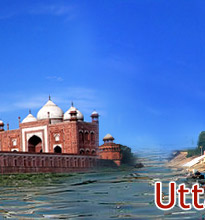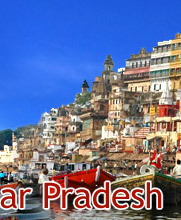Marsiya is basically an elegiac poem that is recited to
commemorate the martyrdom of Hazrat Imam Hussein and his clan at Karbala
in the then Iraq. Marsiya generally consists of six-line units, with a
rhyming quatrain, and a couplet on a different rhyme. Actually Marsiya
is an elegy on the death of a family member or close friend but in the
course of history it has become synonymous with the martyrdom Imam
Hussein. Marsiya has its roots in Arabic and Persian literature. By 1830
the genre had emerged in Lucknow, at the hands of Mir Babur Ali Anis and
Mirza Salamat Ali Dabir, in a form distinct from its earlier literary
antecedents. Marsiya is extremely popular all over the world but some of
the best exponents of Marsiya reside in Lucknow, the citadel of Shia
Islam and capital of Uttar Pradesh. Shia Muslims regarded it an act of
piety and religious duty to eulogies and bemoan the martyrs of Karbala.
The sub-parts of Marsiya are called Noah and Soz which means lamentation
and burning of heart respectively.
A Marsiya is characterized by six-line verses in an AA, AA and BB rhyme
scheme. They are traditionally either recited by Marsiya-Khwans or sung
by a Marsiya-Soz at Shia mourning assemblies held during the month of
Mohharum. A classical Urdu Marsiya, usually includes most of the
following sections: a prelude (Chehrah) of poems of praise, descriptions
of the morning or night before the battle, or a general introduction to
the hardships faced by Hussein; a description of the poem's hero -
whether Hussein or one of his companions - and his virtues; the
leave-taking or departure for the battlefield (Rukhsat); the entry onto
the field (Aamad); a declaration of the hero's martial prowess (Rajaz);
the battle (Jang); the martyrdom (Shahadat); and finally, the lament
(Bain). To this one could add the topical focus (Maajrah) and the prayer
(Dua).
Though its language draws heavily on Arabic and Persian vocabulary, the
Urdu Marsiya is imbued with the color and flavor of the Indian
subcontinent. The best of verses are exquisite cameos composed of images
of local flora and fauna, drawing on local custom and tradition. In
terms of emotional range the Marsiya swings between heroic displays of
martial skill and tender descriptions of affection and bereavement
between the high moral virtue of the people of the House of the Prophet
and their ultimate vulnerability in the face of death and loss. Some of
the famous Marsiya writers of Uttar Pradesh are Mir Babur Ali Anis,
Salamat Ali Dabir, Syed Muhammad Mirza Uns, Syed Sajjad Hussein, Shadeed
Lucknavi, Dr. Syed Ali Imam Zaidi and Gauher Lucknavi.

    |




